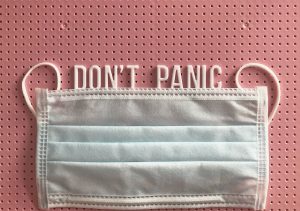 Get ready for this: “I’m from the government, and I’m here to help.” Here’s the deal: “I’m going to give you $20,833 today. I want you to give me $5,448 no later than two years from now. You can keep the $15,385 difference, tax-free—no strings.” It’s true. The lucky recipient could be you. To obtain the full $15,385 tax-free cash result in this deal (one of many COVID-19-related assistance programs), you must
Get ready for this: “I’m from the government, and I’m here to help.” Here’s the deal: “I’m going to give you $20,833 today. I want you to give me $5,448 no later than two years from now. You can keep the $15,385 difference, tax-free—no strings.” It’s true. The lucky recipient could be you. To obtain the full $15,385 tax-free cash result in this deal (one of many COVID-19-related assistance programs), you must
- be self-employed,
- have no employees, and
- have self-employment net profits of $100,000 or more.
If you are self-employed, you have no employees, and your net profits are
- $75,000, you pocket $11,538, tax-free.
- $50,000, you pocket $7,692, tax-free.
- $25,000, you pocket $3,846, tax-free.
The results above come from the COVID-19 Payroll Protection Program (PPP). When you are a self-employed taxpayer with no employees, the PPP treats you as the one and only employee, and treats your net profits as your payroll. Big Picture Under the PPP, you go to your bank or another Small Business Association (SBA) bank or lender and obtain the PPP loan based on your 2019 net profits. It’s a no-doc loan—super easy. No credit report, no nothing. Do This Now Two steps:
- Read this letter.
- Get your bank (or another bank) to accept your application.
Don’t Procrastinate The SBA runs out of PPP money in a hurry. The second round of funding started a few days ago. If you snooze, you lose. And then you’ll have to wait until round 3 of funding, should it take place. (We think it will.) If you are self-employed, with no employees, you absolutely need to qualify for this loan and its forgiveness. Think free money. Think cash help during this crisis. Here are three questions and answers that will help you understand this program during these COVID-19 times. Read on. Q&A 1 Question 1. I have income from self-employment, have no W-2 employees, and file a Form 1040, Schedule C. Am I eligible for a PPP loan? Answer 1. You are eligible for a PPP loan if
- you were in operation on February 15, 2020;
- you are an individual with self-employment income (such as an independent contractor or a sole proprietor);
- your principal place of residence is in the United States; and
- you have filed or will file a Form 1040 Schedule C for 2019.
Q&A 2 Question 2. Since I have no employees, how do I calculate the maximum amount I can borrow, and what documentation is required? Answer 2. Follow the three steps listed below:
- Find your 2019 IRS Form 1040 Schedule C line 31 net profit. (If you have not yet filed your 2019 tax return, don’t fret. Fill out the Schedule C now. You need it for the loan.) If the net profit amount is over $100,000, reduce it to $100,000.
- Calculate the average monthly net profit amount (divide the net profit by 12).
- Multiply the average monthly net profit amount by 2.5.
Q&A 3 Question 3. What amount of the loan qualifies for forgiveness (remember, I don’t have any employees)? Answer 3. You are going to like this. With no employees, your loan forgiveness is
- eight weeks’ worth (8/52) of your 2019 net profit (yes, last year, from that Schedule C you used for the loan amount—you don’t have to consider your 2020 profits);
- mortgage interest paid during the covered period (eight weeks from loan receipt) on real or personal business property (the interest you will deduct on Schedule C);
- rent payments during the covered period on lease agreements in force before February 15, 2020, to the extent they are deductible on Form 1040 chedule C (business rent payments); and
- utility payments under service agreements dated before February 15, 2020, to the extent they are deductible on Form 1040 Schedule C (business utility payments).
- The SBA will reduce your loan forgiveness by any COVID-19 qualified sick or family leave tax credit you claimed. Your loan is for two years, but you don’t have to wait much longer than the eight weeks to apply for forgiveness. There are no prepayment penalties. Example Loan amount. Say your Schedule C shows $120,000 of net profit. Your limit is $100,000. Divide that by 12, and your monthly amount is $8,333. Multiply that by 2.5, and your loan amount is $20,833. Loan forgiveness. Your loan forgiveness is $15,385 (8/52 of $100,000) plus qualifying interest, rent, and utilities, not to exceed total loan forgiveness of more than $20,513. In the SBA loan application, the amounts from this example show as follows:
- x 2.5 = $20,833
- Number of employees: self
- Proof that you were self-employed during 2019, such as a 2019 Form 1099-MISC, invoice, bank statement, or other book of record
- Proof that you were operating as a Schedule C business on or around February 15, 2020 (a 2020 invoice, bank statement, or book of record)
- Completed application with an SBA lender




